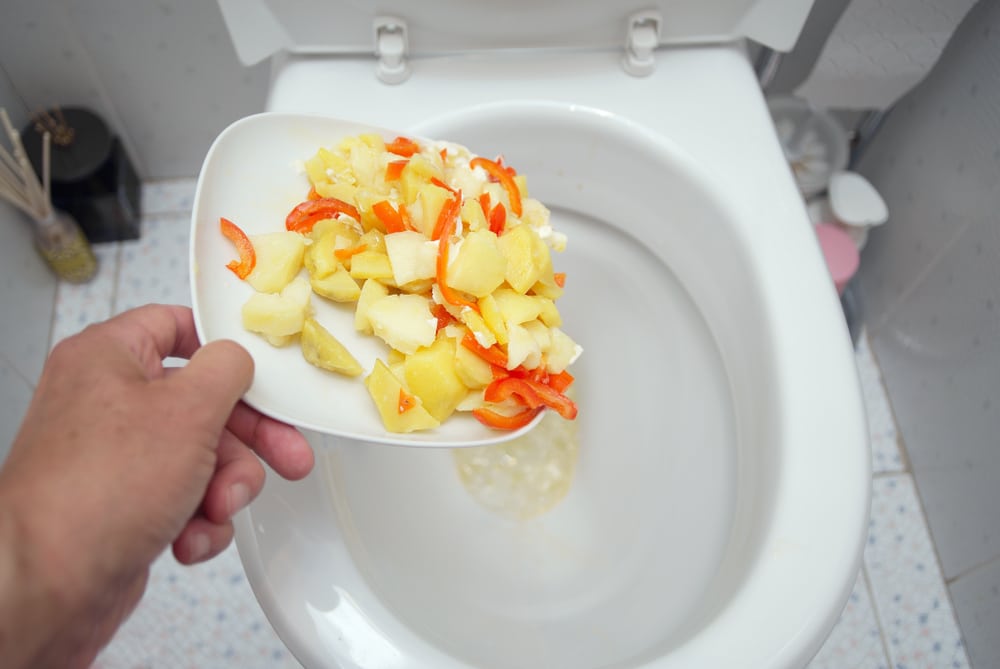Can You to Dispose of Food in the Toilet?
Can You to Dispose of Food in the Toilet?
Blog Article
Just how do you feel in relation to Is it safe to flush food (especially rice) down the toilet??

Intro
Many individuals are typically faced with the problem of what to do with food waste, particularly when it comes to leftovers or scraps. One common question that develops is whether it's fine to purge food down the toilet. In this short article, we'll explore the reasons why individuals could take into consideration flushing food, the effects of doing so, and alternate approaches for appropriate disposal.
Reasons why people might consider purging food
Lack of understanding
Some people may not know the potential damage caused by purging food down the commode. They might wrongly think that it's a safe technique.
Benefit
Purging food down the bathroom may feel like a quick and very easy solution to taking care of undesirable scraps, especially when there's no neighboring trash bin readily available.
Laziness
In many cases, individuals might merely select to flush food out of sheer negligence, without considering the effects of their actions.
Repercussions of flushing food down the toilet
Environmental effect
Food waste that ends up in rivers can add to air pollution and harm aquatic ecological communities. Additionally, the water made use of to purge food can stress water sources.
Plumbing issues
Flushing food can result in blocked pipes and drains, triggering costly plumbing repairs and inconveniences.
Sorts of food that need to not be purged
Coarse foods
Foods with coarse appearances such as celery or corn husks can obtain tangled in pipelines and create obstructions.
Starchy foods
Starchy foods like pasta and rice can absorb water and swell, leading to obstructions in pipelines.
Oils and fats
Greasy foods like bacon or food preparation oils must never be purged down the commode as they can strengthen and create obstructions.
Proper disposal techniques for food waste
Utilizing a waste disposal unit
For homes outfitted with garbage disposals, food scraps can be ground up and flushed through the plumbing system. Nevertheless, not all foods appropriate for disposal in this fashion.
Recycling
Particular food packaging materials can be recycled, minimizing waste and lessening ecological influence.
Composting
Composting is a green way to throw away food waste. Organic products can be composted and made use of to enrich dirt for horticulture.
The importance of appropriate waste management
Reducing environmental damage
Appropriate waste management practices, such as composting and recycling, help lessen air pollution and preserve natural deposits for future generations.
Securing plumbing systems
By preventing the method of flushing food down the commode, home owners can prevent costly plumbing fixings and maintain the integrity of their plumbing systems.
Verdict
Finally, while it may be tempting to purge food down the commode for ease, it's important to recognize the possible repercussions of this action. By adopting proper waste management techniques and disposing of food waste sensibly, people can add to healthier pipes systems and a cleaner atmosphere for all.
FLUSH FOOD DOWN THE TOILET?
FLUSHING FOOD CAN CAUSE BLOCKED DRAINS IN YOUR HOME
All of the plumbing fixtures in your home are connected to the same sewer pipe outside of your home. This outdoor sewer pipe is responsible for transporting all the wastewater from your home to the Council sewer mains. Even small pieces of food that go down the kitchen sink can cause problems for your sewer. It should therefore be obvious that flushing larger bits of food, such as meat, risks a clog in either the toilet itself or the sewer pipes. Flushing greasy food is even more problematic because oil coagulates when it cools, coating the interior lining of your pipes.
THE TOILET IS NOT A BIN
Food isn’t the only thing that people shouldn’t be flushing down the toilet. People use the toilet to dispose of all kinds of things such as tampons, makeup wipes, dental floss, kitty litter and even underwear. Water goes to great lengths to educate residents about the high costs and stress placed on wastewater treatment systems simply from people flushing the wrong stuff down the toilet. It costs taxpayers millions of dollars each year, and homeowners thousands in blocked drain repairs.
FLUSHING FOOD IS A WASTE OF WATER
Flushing food is a waste of our most precious resource - water. In June this year Level 1 water restrictions were introduced to protect water supply from drought conditions. Much of New South Wales continues to be affected by prolonged drought with recent figures revealing up to 97 per cent of the state remains in drought. Depending on whether you have a single or dual flush toilet, every single flush uses between five and 11 litres of water. In the current climate this is a huge amount of water to be wasting on flushing food that should be placed in the bin (or better yet, the compost).
https://www.jabplumbingsolutions.com.au/blog/can-you-flush-food-down-the-toilet

Do you really like reading up on ? Post feedback down the page. We'd be delighted to listen to your views about this write up. We hope to see you back again later on. Sharing is good. Helping people is fun. Many thanks for your time. Don't forget to check our blog back soon.
Visit My Web Page Report this page